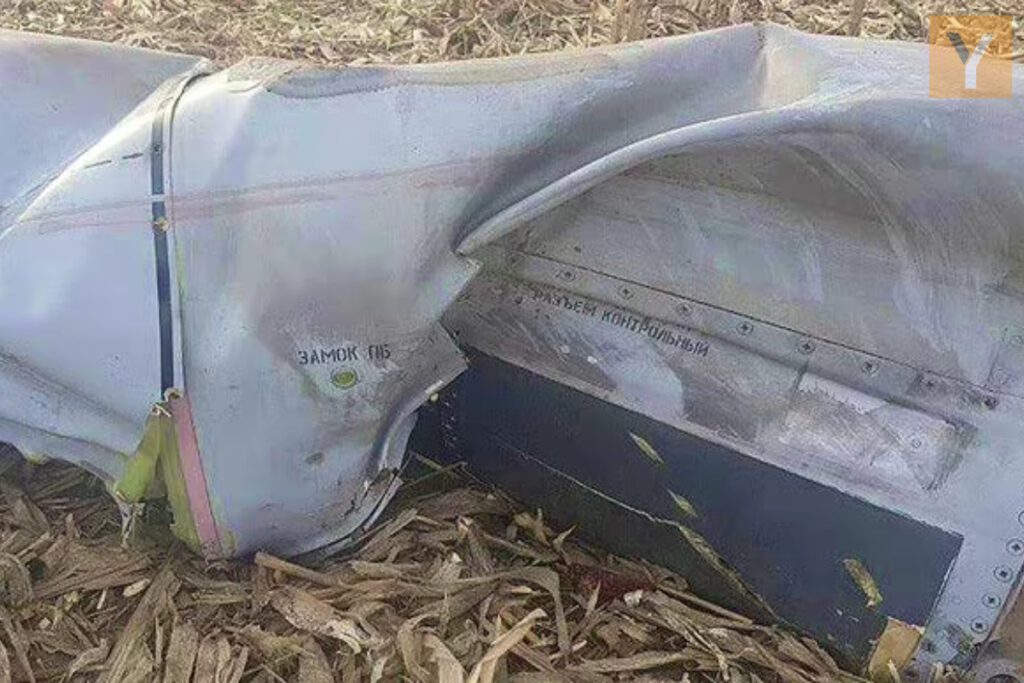
Ukrainian Air Force has redefined the landscape of aerial warfare by successfully neutralizing over 20 Russian missiles and drones during a combined air attack on Ukraine. This remarkable feat, executed on the morning of January 13, signifies a pivotal moment in the ongoing conflict as Ukrainian forces showcase their adeptness in countering advanced Russian weaponry.
The Strategic Counterattack
The aerial confrontation began on the night of January 12-13, when Russian forces launched a formidable airstrike on Ukraine employing an array of assets, including cruise, aeroballistic, aerial, and anti-aircraft guided missiles, along with attack UAVs. However, Ukrainian air defence forces swiftly engaged, destroying eight incoming missiles. What unfolded next was a testament to the prowess of Ukrainian electronic warfare systems.
The Missiles’ Mysterious Demise
More than 20 aerial targets used by the Russian forces in their attack failed to reach their intended destinations. Ukrainian Air Force spokesperson Yurii Ihnat revealed that these missiles met various fates – some exploded mid-flight, others landed in unpopulated areas, and a considerable number succumbed to the effective response from Ukrainian electronic warfare systems.
[adinserter name="Three"]Kyrylo Budanov, Head of Defence Intelligence of Ukraine, highlighted a notable trend of deterioration in the efficiency of Russian missiles. This includes the increasing ineffectiveness of kamikaze drones, offering a glimmer of hope for the Ukrainian forces.
[adinserter name="One"]When questioned about the factors contributing to the poor outcome of the Russian air attack, Ihnat refrained from disclosing specific details but emphasized that it was a combination of factors. The likely poor quality of Russian weapons and the effectiveness of Ukrainian electronic warfare played crucial roles in thwarting the assault.
The Scale of Russian Assets
A total of 40 Russian air attack means were detected during the operation, ranging from anti-aircraft guided missiles to attack UAVs and cruise missiles. Notably, seven S-300/S-400 anti-aircraft guided missiles were launched from Russia’s Belgorod Oblast, three Shahed-136/131 attack UAVs from Kursk Oblast, and six Kh-47M2 Kinzhal aero-ballistic missiles from six MiG-31K aircraft in Tambov, Russia.
Ukrainian forces successfully destroyed seven Kh-101/Kh-555/Kh-55 cruise missiles and one Kh-59 guided missile during the intense combat operations.
The Impact of Electronic Warfare
Over 20 of the listed air attack means failed to reach their targets due to active countermeasures by Ukrainian electronic warfare systems. Ihnat cautioned against underestimating the threat posed by Russian missiles despite their apparent decline in efficiency, urging vigilance and adherence to air-raid warnings, especially in the face of ballistic weapons.
The Ukrainian success in neutralizing Russian missiles mid-flight marks a significant tactical victory and provides insights into modern warfare’s evolving dynamics. As the conflict unfolds, the world watches closely, wondering how this innovative defence strategy will shape the future of aerial warfare.
[adinserter name="Four"]Conclusion
The January 13, 2023, events will undoubtedly be remembered as a defining moment in the conflict between Ukraine and Russia. The successful neutralization of Russian missiles without a trace mid-flight not only showcases the resilience of the Ukrainian Air Force but also introduces a new chapter in the ongoing saga of geopolitical tensions. As nations recalibrate their strategies in response to this unforeseen development, the Ukrainian defense forces stand as a testament to the power of innovation and adaptability in the face of adversity.
[adinserter name="Five"]Frequently Asked Questions (FAQs)
-
How did Ukrainian electronic warfare systems neutralize the Russian missiles mid-flight?
The article highlights that Ukrainian electronic warfare systems played a pivotal role in countering the Russian air attack. Specific details about the methods and technologies employed are not disclosed, but the success is attributed to a combination of factors, including the likely poor quality of Russian weapons.
-
What were the key factors contributing to the poor outcome of the Russian air attack on Ukraine?
The Ukrainian Air Force spokesperson, Yurii Ihnat, mentions a combination of factors that led to the failure of the Russian air attack. While the article points to the likely poor quality of Russian weapons, it also underscores the effectiveness of Ukrainian electronic warfare. The specific details remain undisclosed for strategic reasons.
-
How many Russian air attack means were detected, and what was the fate of each during the operation?
The article provides a breakdown of the 40 Russian air attack means detected during the operation, including anti-aircraft guided missiles, attack UAVs, and cruise missiles. It mentions that eight missiles were successfully destroyed by Ukrainian air defense forces, and more than 20 others failed to reach their targets due to the active countermeasures of electronic warfare systems.






